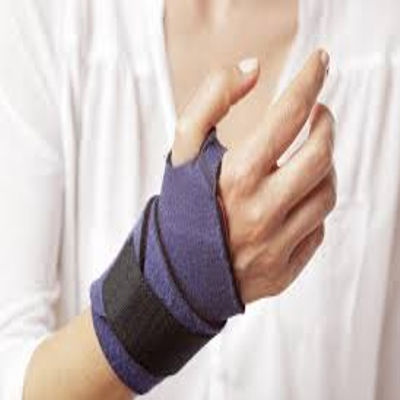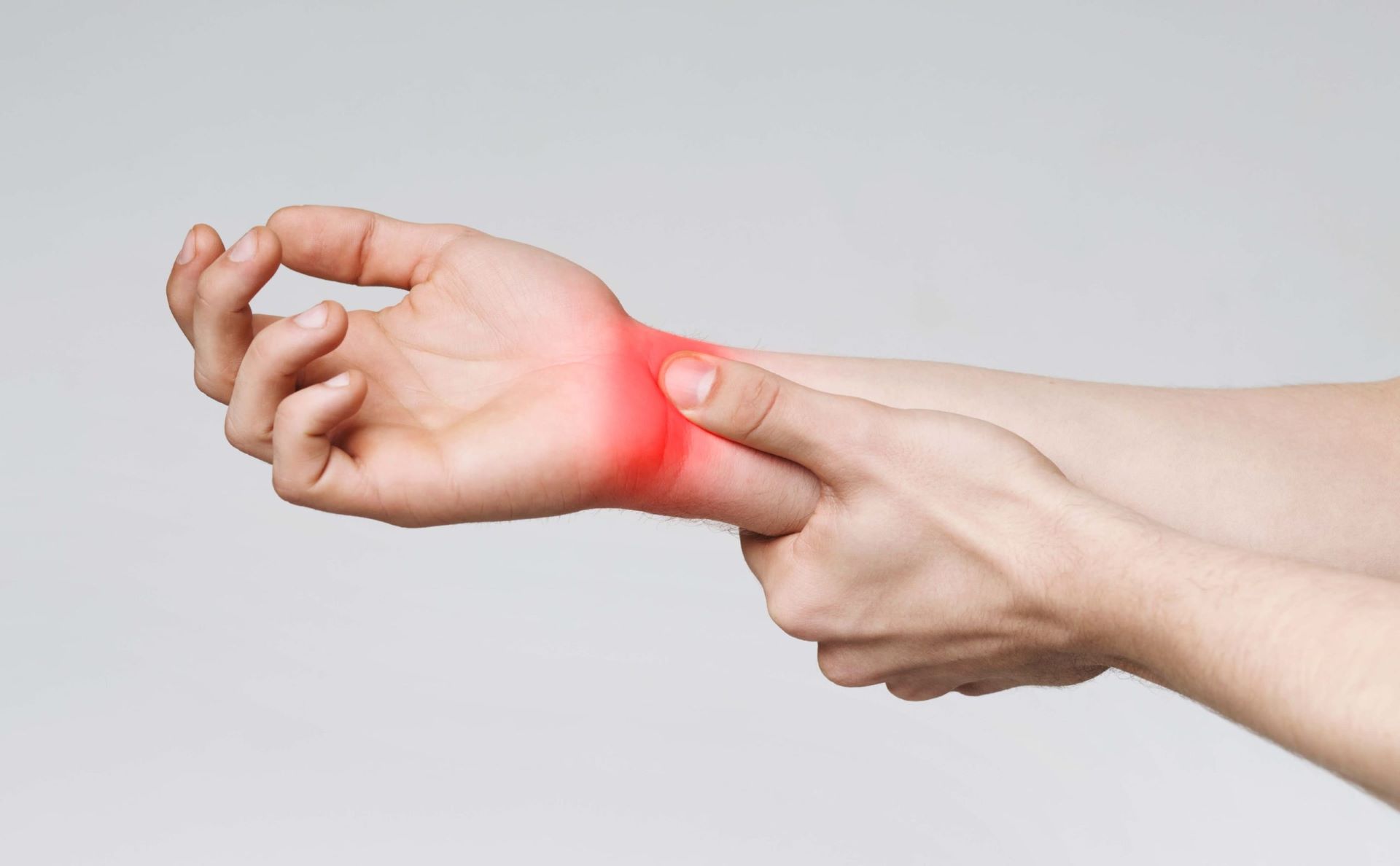What Are Effective Carpal Tunnel Solutions for Wrist Pain Relief?
Carpal tunnel syndrome is a prevalent condition that can significantly impact daily life. Caused by pressure on the nerve, which runs through the carpal tunnel in your wrist, this syndrome leads to discomfort in the hand and wrist, often resulting in numbness, tingling, and chronic pain.

Carpal tunnel syndrome is a prevalent condition that can significantly impact daily life. Caused by pressure on the nerve, which runs through the carpal tunnel in your wrist, this syndrome leads to discomfort in the hand and wrist, often resulting in numbness, tingling, and chronic pain. Understanding how to effectively treat carpal tunnel syndrome is essential for alleviating symptoms and improving quality of life, and Comp-MD is here to guide you through the best carpal tunnel solutions.
Understanding Carpal Tunnel Syndrome
What Is Carpal Tunnel Syndrome?
Carpal tunnel syndrome occurs when the median nerve, which provides sensation to the palm side of the thumb and fingers, becomes compressed as it travels through the carpal tunnel. This tunnel is formed by the carpal bones and a ligament that crosses over the wrist. When there is swelling, inflammation, or injury, the space within the carpal tunnel can narrow, leading to increased pressure on the median nerve. At Comp-MD, we emphasize understanding this condition for effective carpal tunnel solutions.

Symptoms of Carpal Tunnel Syndrome
Recognizing the symptoms of carpal tunnel syndrome is crucial for early intervention. The symptoms can vary in severity and may include:
- Numbness and Tingling: Many people experience numbness or tingling, especially in the thumb, index, and middle fingers. This sensation can often be described as a “pins and needles” feeling.
- Pain: Pain may radiate from the wrist up the arm or down into the fingers. It can be more pronounced during activities that involve repetitive wrist movements, such as typing or using a mouse.
- Weakness: Individuals may notice weakness in their grip, making it difficult to hold objects or perform tasks that require fine motor skills, such as buttoning a shirt.
These symptoms can come and go, often worsening at night or after prolonged use of the hands. At Comp-MD, we recommend seeking help as soon as these symptoms appear to explore potential carpal tunnel solutions.
Effective Carpal Tunnel Solutions
Non-Surgical Carpal Tunnel Solutions
Wrist Splints
One of the first lines of defense in treatment for carpal tunnel syndrome is wearing a wrist splint. Comp-MD suggests that splints keep the wrist in a neutral position, reducing pressure on the median nerve. This is particularly effective at night when symptoms often worsen. Wearing a splint during the daytime, especially while engaging in activities that require wrist use, can also help alleviate discomfort.
Home Remedies
Many individuals seek home remedies as part of their carpal tunnel solutions to manage mild to moderate carpal tunnel symptoms. Some effective options include:
- Cold Compress: Applying a cold pack to the wrist can help reduce inflammation and numbness. Ice should be wrapped in a cloth to prevent frostbite and used for 10-15 minutes at a time.
- Gentle Stretching and Gliding Exercises: Performing gentle exercises can promote blood flow and reduce stiffness. Comp-MD recommends simple wrist stretches and finger gliding exercises. Consulting with a physical or occupational therapist for a tailored exercise plan can be advantageous.
- Elevation: Keeping the wrist elevated can help reduce swelling, especially during flare-ups.
Medication
Over-the-counter medications such as non-steroidal anti-inflammatory drugs like ibuprofen or naproxen can temporarily reduce pain and reduce inflammation. For more severe symptoms, corticosteroid injections may be recommended as part of effective carpal tunnel solutions. These injections can significantly decrease inflammation and provide temporary relief, allowing for better function.
Physical and Occupational Therapy
Consulting a physical or occupational therapist can be instrumental in developing personalized carpal tunnel solutions. Therapists can guide patients through specific exercises aimed at strengthening the wrist and improving flexibility. Comp-MD believes that a proactive approach through therapy can lead to significant improvements in managing symptoms.
Surgical Carpal Tunnel Solutions
If conservative treatments fail to provide adequate relief, surgery for carpal tunnel syndrome may be considered. Surgical options include:
Open Surgery
Open surgery involves making an incision in the palm to cut the transverse carpal ligament. This procedure increases the space within the carpal tunnel, relieving pressure on the median nerve. While effective, recovery may take several weeks, during which patients may need to limit activities that strain the wrist. Comp-MD supports discussing all surgical options with your healthcare provider to understand the benefits and risks as part of your carpal tunnel surgery.
Endoscopic Surgery
Endoscopic surgery is a less invasive option that uses a small camera and instruments to cut the ligament through a smaller incision. This method often results in less postoperative pain and a quicker recovery time. Patients can typically return to normal activities sooner than with open surgery. Comp-MD highlights that both surgical options aim to relieve pressure on the median nerve, providing long-term relief from symptoms.
Causes of Carpal Tunnel Syndrome
Understanding the causes of pressure within the carpal tunnel syndrome can help in both treatment and prevention. Some common contributors include:
- Repetitive Hand Movements: Engaging in repetitive tasks, such as typing or assembly line work, can increase the risk of developing carpal tunnel syndrome. Comp-MD encourages individuals to take breaks during prolonged activities as a preventive carpal tunnel solution.
- Health Conditions: Certain medical conditions, such as diabetes, arthritis, and hypothyroidism, can increase the risk of nerve damage and inflammation.
- Anatomical Factors: Some individuals may have anatomical variations that predispose them to carpal tunnel syndrome, such as a smaller carpal tunnel space.
- Weight Gain and Pregnancy: Increased weight and hormonal changes during pregnancy can lead to swelling, which may contribute to the development of carpal tunnel syndrome.
Preventive Measures
To help prevent carpal tunnel syndrome, consider the following strategies recommended by Comp-MD as effective carpal tunnel solutions:
- Ergonomic Adjustments: Ensuring that your workstation is ergonomically designed can significantly reduce strain on the wrist. Use chairs and keyboards that promote a neutral wrist position.
- Frequent Breaks: Taking regular breaks from repetitive tasks allows the muscles and tendons in your hands and wrists to rest and recover.
- Maintain Good Posture: Good posture while sitting and working can prevent unnecessary strain on your wrists and forearms.
- Stretch and Strengthen: Incorporate stretching and strengthening exercises into your routine to improve wrist flexibility and strength.
Recovery from Carpal Tunnel Syndrome
Recovery from carpal tunnel syndrome varies based on the severity of the condition and the treatment chosen. For individuals who opt for non-surgical methods, consistent adherence to a therapy regimen can lead to significant improvement. Comp-MD emphasizes the importance of following through with recommended exercises and therapies for optimal recovery.

For those undergoing surgery, the recovery process typically involves:
- Postoperative Care: Following the surgeon’s instructions for wound care and rehabilitation is crucial. Patients are often advised to start gentle movements early to prevent stiffness.
- Rehabilitation: A structured rehabilitation program, often guided by an occupational therapist, can facilitate recovery. This may include exercises to improve strength and flexibility and techniques to prevent re-injury.
Conclusion
Carpal tunnel syndrome can be a debilitating condition, but various effective carpal tunnel solutions are available. From home remedies and splints to physical therapy and surgical options, individuals can find relief from symptoms and regain function in their hands and wrists. Early intervention is key; if you experience persistent symptoms, consult a healthcare professional for a comprehensive diagnosis and treatment plan tailored to your needs. At Comp-MD, we’re committed to providing the resources and support you need to manage and overcome carpal tunnel syndrome effectively.
FAQs
How can I prevent carpal tunnel syndrome?
Preventive measures are essential for reducing the risk of developing carpal tunnel syndrome. Ergonomic adjustments to your workspace can significantly minimize wrist strain. This includes using chairs and keyboards that promote a neutral wrist position.
What are non-surgical treatment options for carpal tunnel syndrome?
There are several effective non-surgical treatment options available. One of the first recommendations is wearing a wrist splint to keep the wrist in a neutral position, particularly at night.
When is surgery considered for carpal tunnel syndrome?
Surgery is typically considered when conservative treatments do not provide sufficient relief over time. Surgical options include open surgery, where an incision is made to cut the transverse carpal ligament, and endoscopic surgery, which is less invasive and utilizes a smaller incision.
What can I expect during recovery from carpal tunnel surgery?
Recovery from carpal tunnel surgery can vary based on the surgical method used and individual factors. Patients are usually advised to follow specific postoperative care instructions from their surgeon, which may include starting gentle movements early to prevent stiffness.
How long does recovery take after surgery?
Recovery time can differ among individuals, but many patients begin to notice improvement within a few weeks. Complete recovery may take several months, depending on factors such as the severity of the condition prior to surgery and adherence to rehabilitation protocols.




